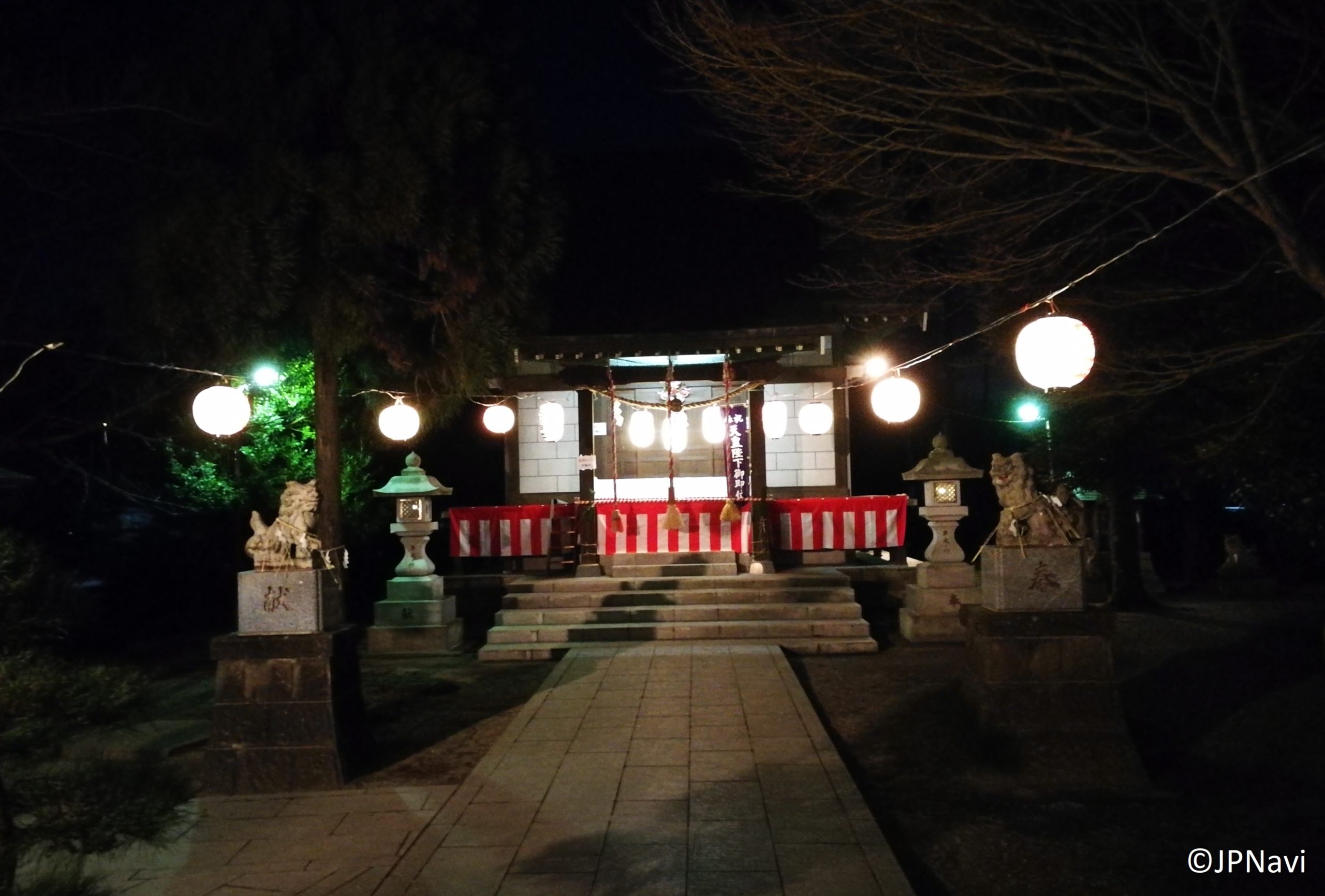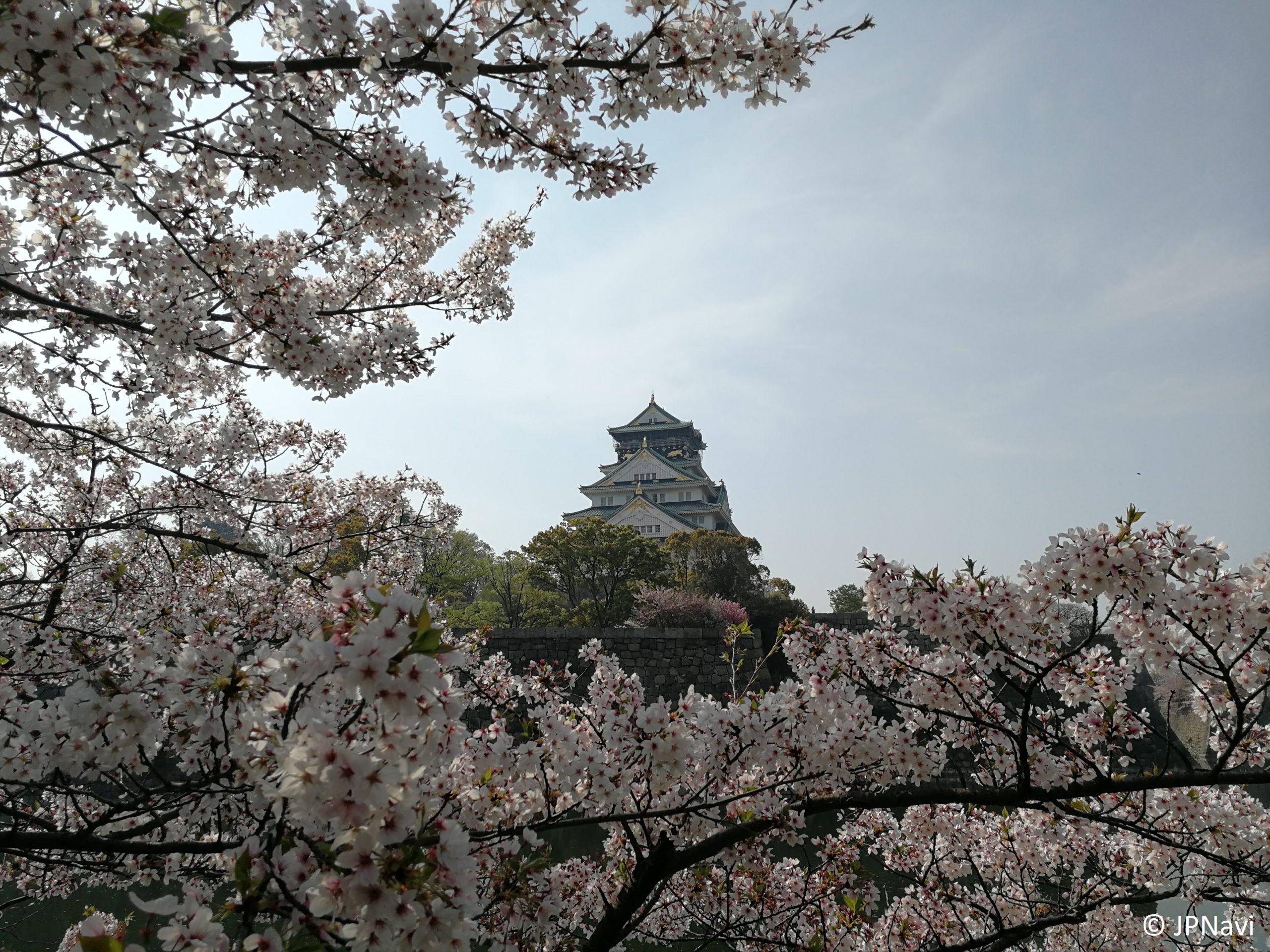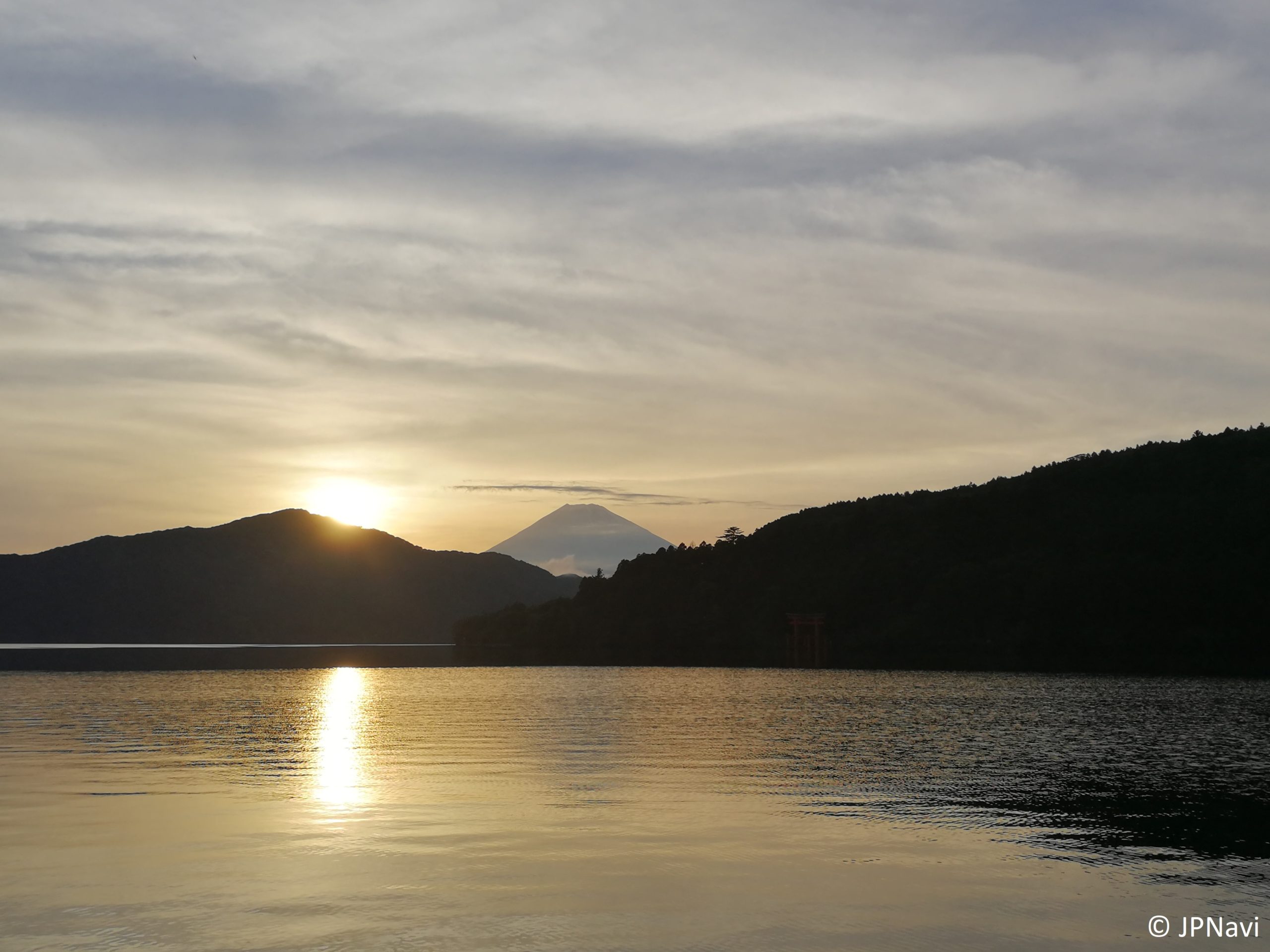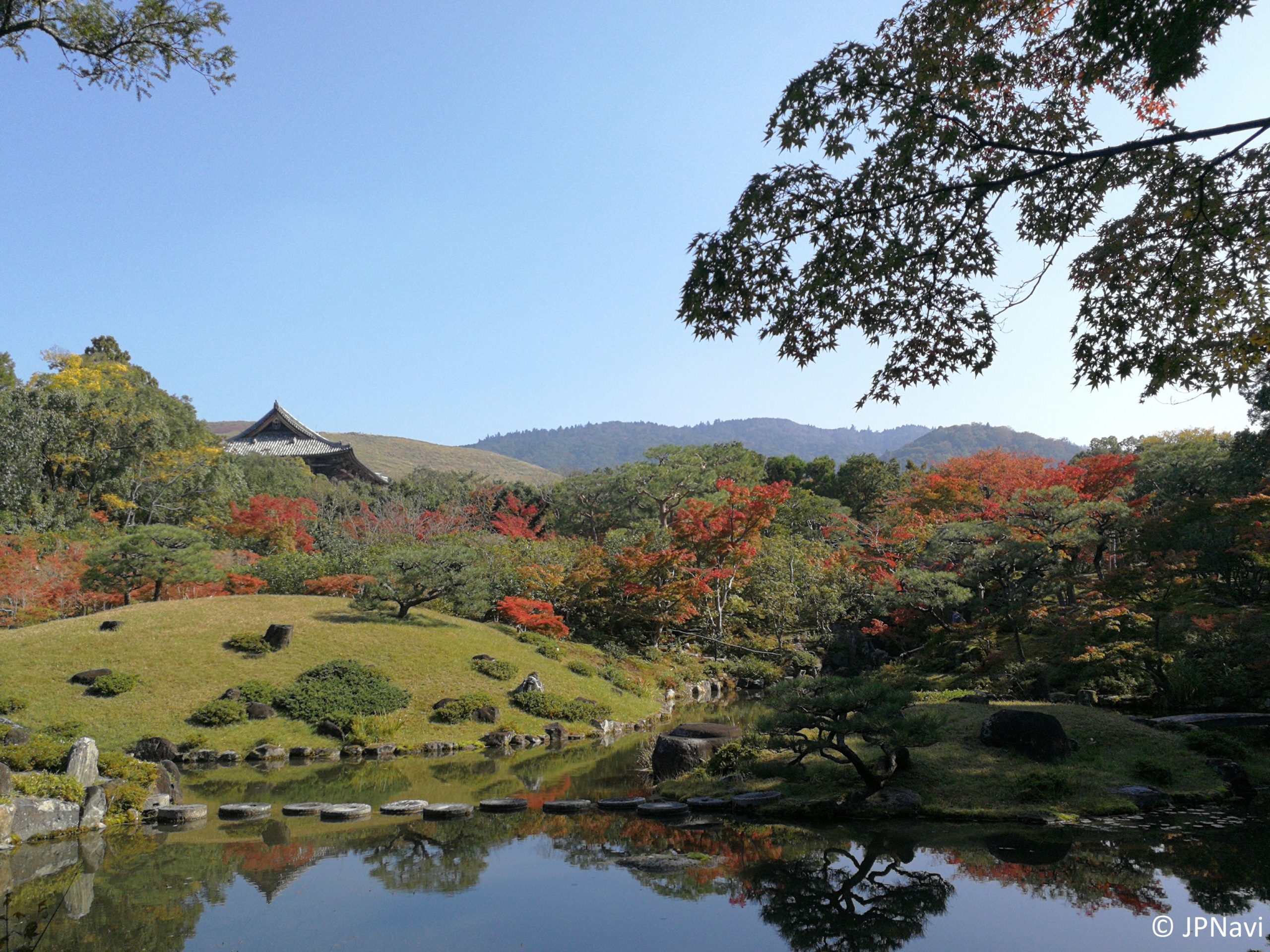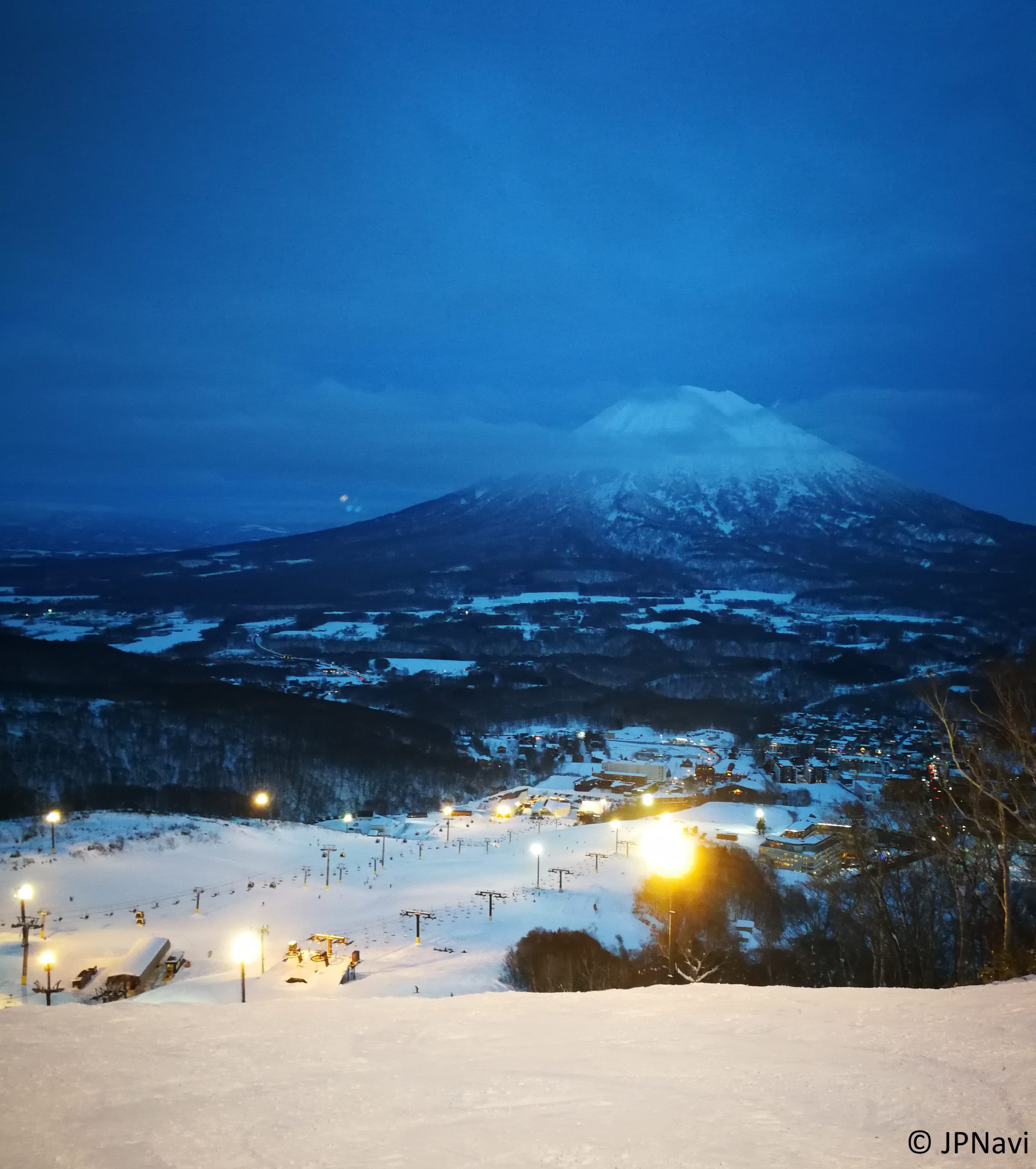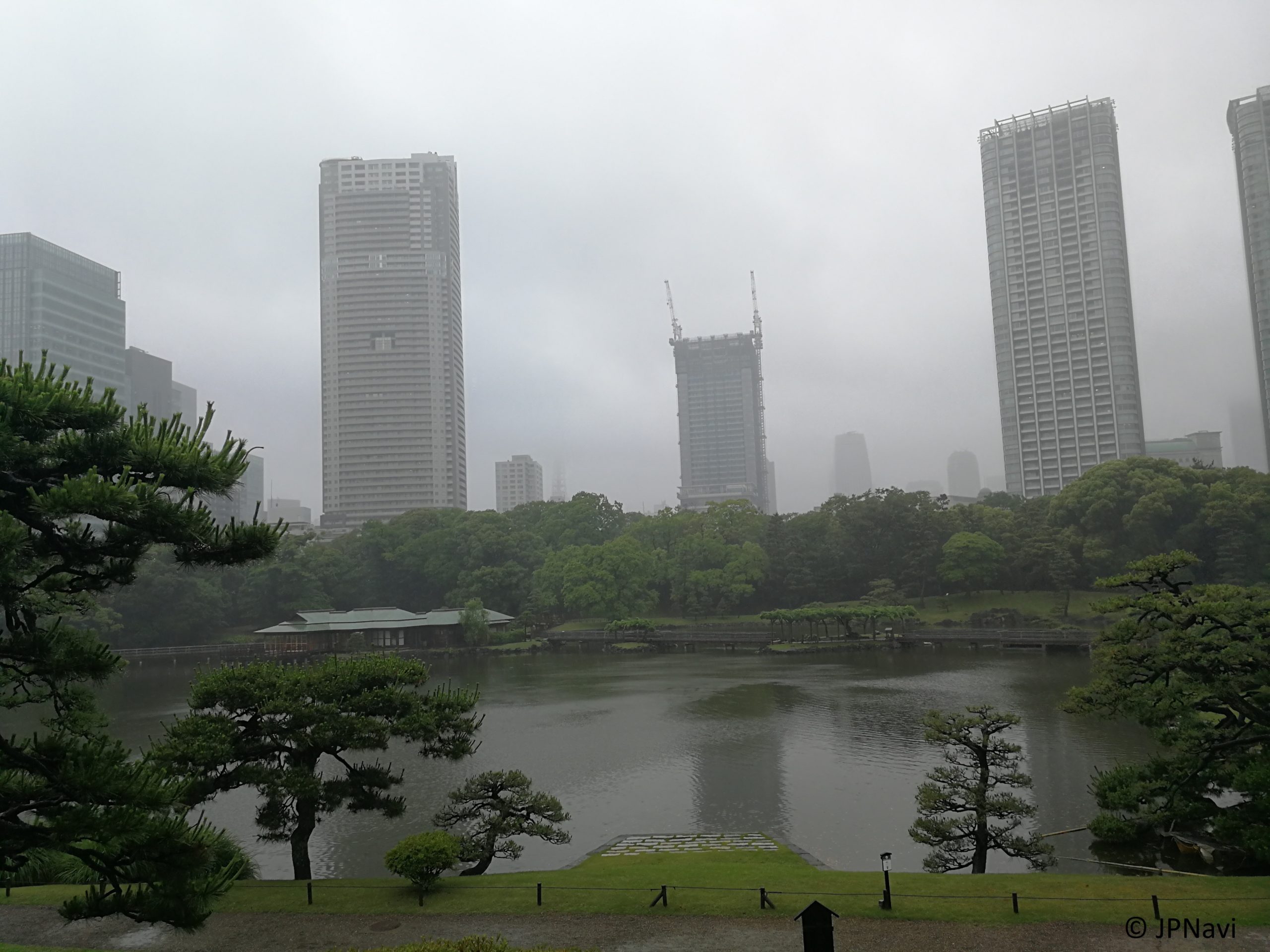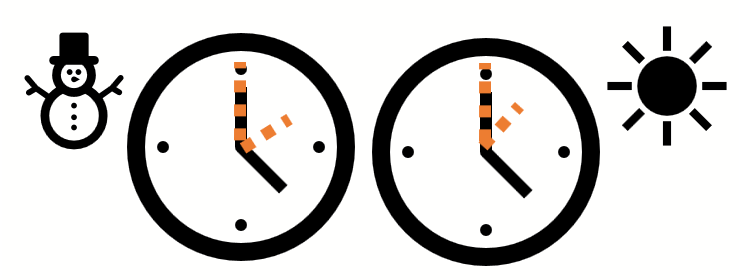Hello everybody! You would like to have an overview of all holidays in Japan? Then don’t search for them one by one, but have a look at the overview including the japanese name in this article.
In Japan there are even more public holidays than in Bavaria, so it is even more worth reading on 😉
And also the regulations concerning the opening hours of the shops are different in Japan on holidays, right?
Exactly. More public holidays does not mean that employees have more time off overall, but that another problem. And if a holiday falls on a Sunday, there is a special rule for employees in Japan! Are you curious? Then jump straight to the section that interests you!
Public Holidays.
First of all, I’m going to put together an overview of all holidays. Public holidays are highlighted in green. Please note that there are alternative dates for public holidays on Sundays (see “Special rule for public holidays on Sundays”).
Most public holidays are bound to a fixed date, some are variable – this is listed accordingly.
In 2020 there are three additional exceptions: Holidays marked with ** are moved to other days in 2020.
Overview of all public holidays
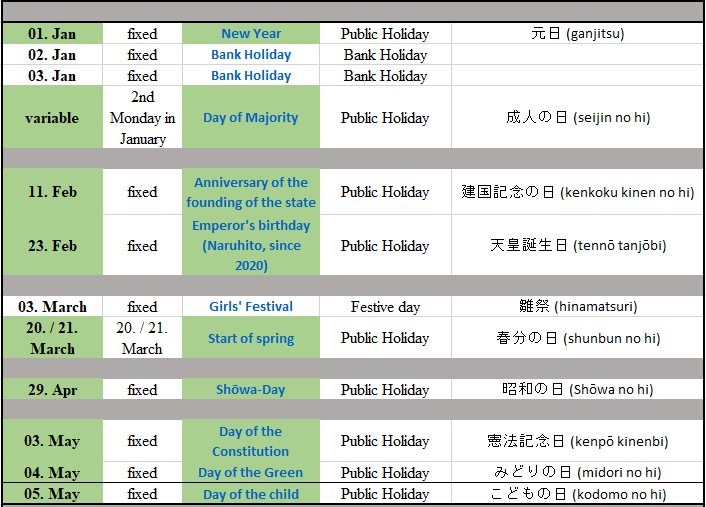
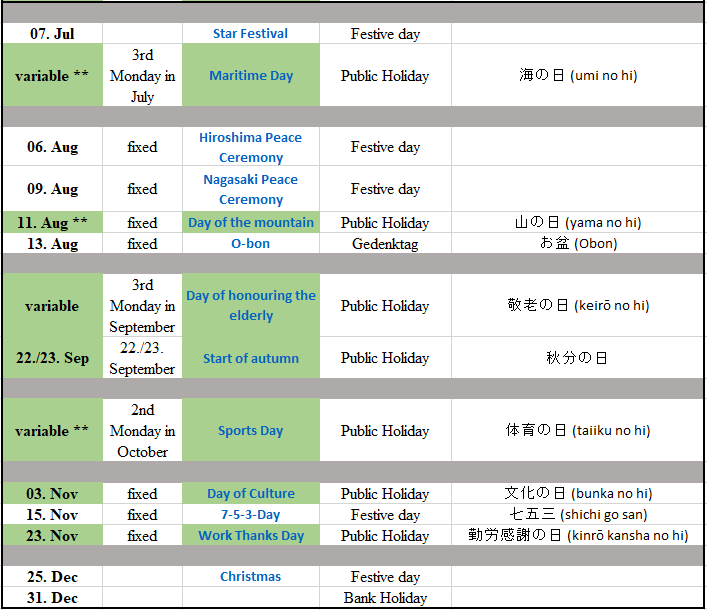
Special rule for public holidays on Sundays
This special rule for public holidays on Sundays only affects you as a traveler to a limited extent but is nevertheless interesting when it comes to full shops or destinations for excursions. For employees, this rule is great; if this rule existed in Germany, we wouldn’t have to worry about years when the holidays are unfavorable.
In Japan, if a public holiday falls on a Sunday, employees automatically have Monday off instead. So the holiday is, so to speak, simply shifted back by one day. This ensures a long weekend 😉 If Monday is also a public holiday, the public holiday on Sunday is simply added to the back of the list, so it falls on Tuesday. If a single working day lies between two public holidays, then the employees have the day off on this day.
You have to expect a correspondingly higher number of visitors when shopping, at excursion destinations and in leisure facilities. Hotels can also be fully booked well in advance, so you should bear this in mind when planning your trip! If the public holiday falls on Sunday, it does not mean that Monday is a normal weekday again. Instead, almost everyone has a day off and takes advantage of it.
Shops on public holidays.
In Germany, shops are usually closed on Sundays and public holidays. In Japan, shops are generally open on Sundays – this applies to supermarkets as well as all other shops and department stores. And the same applies to public holidays. So you don’t have to worry about closed shops or missing shopping opportunities! However, remember that most employees are off on holidays and use the days to shop, so you won’t be the only person shopping.
The only small exception is New Year’s Day and the two following days until 3rd of January. Unfortunately I cannot give you a clear rule here, as the opening hours are determined individually for each shop or department store. The Convenient Stores are of course open 24 hours, regardless of whether the New Year has started or not.
Supermarkets, shops and department stores are normally closed on New Year’s Day, i.e. on 1 January. Some of them open again on 2 January, others only on January 3rd or 4th. In recent years, the number of shops that are already open on New Year’s Day has also increased. But you are on the safe side if you assume that you can’t go big shopping.
From the first open day of the year, many shops sell “New Year Bags” with surprise articles at a “good price”. However, the really good deals are sold out very quickly, so if you are interested, you should find out when the store of your choice will be open again. From time to time part or all of the contents of the bags (with for example varying colors of the articles) are displayed on posters.
Holidays.
School holidays
The new school year begins in Japan on April 1st. The school year then runs over the summer holidays and ends in March. There are not as many individual school holidays in Japan as in some German states.
After school starts in April, the next break comes during the Golden Week – here, the public holidays are free. Some schools fill the bridge days with substitute days, e.g. if the sports festival takes place on Saturdays. You will find more details about the Golden Week further down in this article.
This is followed by the summer holidays, which last about 6 weeks (July & August) and include Obon. However, as the current school year continues after the summer holidays, there is generally homework over the summer holidays. After the summer holidays there is a longer period of free time around New Year’s Day. Here the pupils have 2 weeks off – the two weeks around the turn of the year.
The school year is completed by mid-March, so there are still two weeks of rest before the next school year.
The school holidays are valid for the whole of Japan, so there are no shifts depending on the region as is the case in the German states.
Semester holidays
After graduating from high school at the end of March, the studies also begin in April. In principle, the year can also be divided into summer and winter semesters, which are separated from lecture-free periods. In summer, students have mid/end July to the beginning of September off, depending on the examination period. In winter, March is lecture-free.
Golden Week
The holidays from April 29th to May 5th are called the “Golden Week”. Most employees try to get the remaining working days off between the holidays. Some companies also close down completely during this week, so that the employees automatically have to or may take time off.
This is one of the few times (besides New Year for example) when the majority of Japanese workers can take time off. During the Golden Week, the weather is usually nice and pleasant, so that a lot of people are expected to take time off for all leisure activities.
Obon
Obon is a festival in memory of the ancestors. It takes place in the middle of August and thus also falls during the school holidays. Many Japanese people visit their parents’ house and commemorate their ancestors there together. After their performance at Obon, the deceased come back to the family home and are led there with lanterns.
Together with New Year and the Golden Week, Obon is one of the times with the highest volume of inner-Japanese travel. Most of the workers are allowed to take time off work at Obon, and use the time to visit their families or make other trips.
You should take this into account when planning your trip. Once the date is set, many transportation and accommodation options are fully booked well in advance.
Summary.
Compared to Germany, Japan has many public holidays and also has an employee-friendly arrangement if a holiday falls on a Sunday.
The shops, however, are open on all public holidays, with a few exceptions around New Year’s Day. So you can go shopping every day all year round without having to worry about it. Only on New Year’s Day, you should pay attention to when the shops open.
New Year, Golden Week and Obon are the times of the year when many Japanese people are on the road. You should keep this in mind when planning your trip, as many things can be fully booked in advance.

